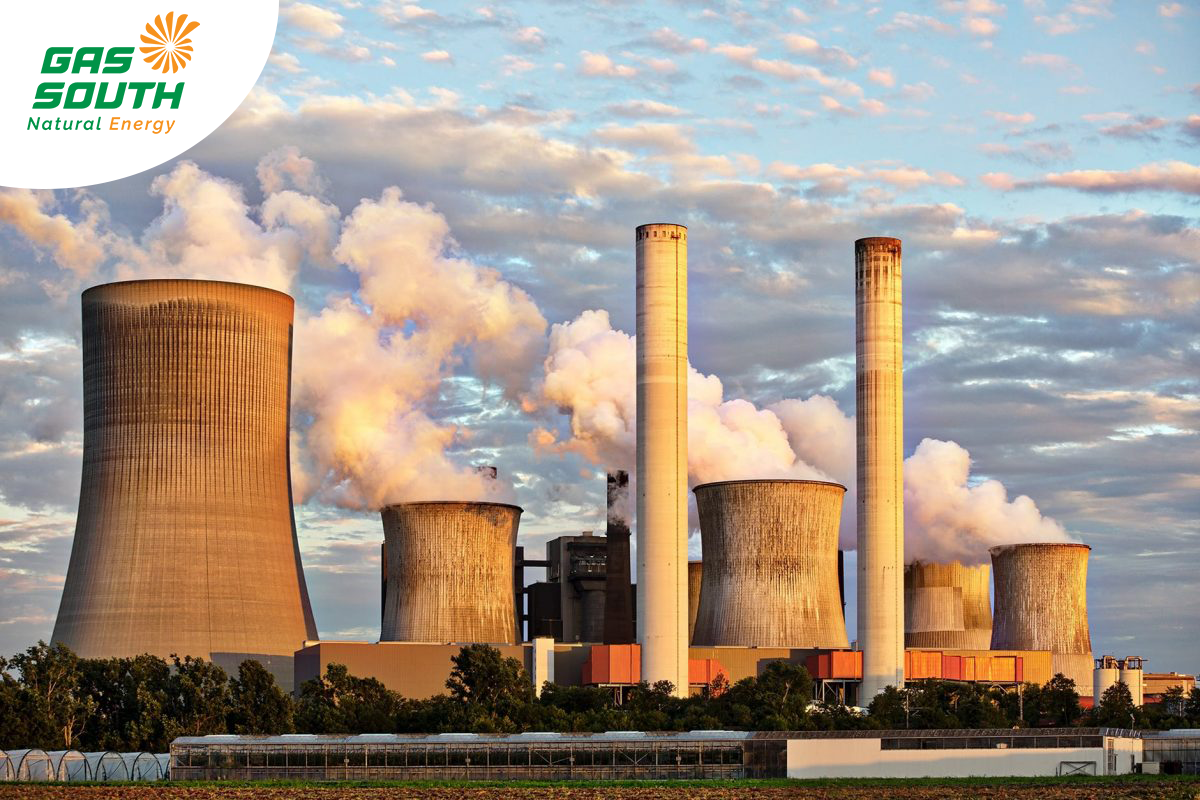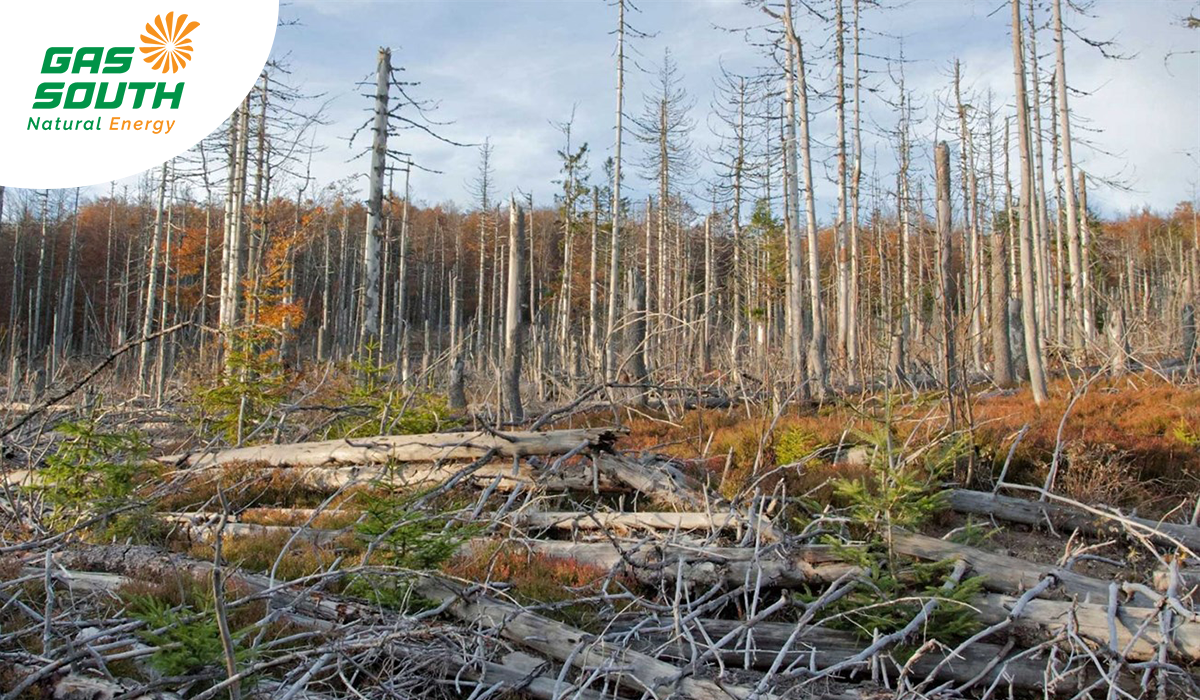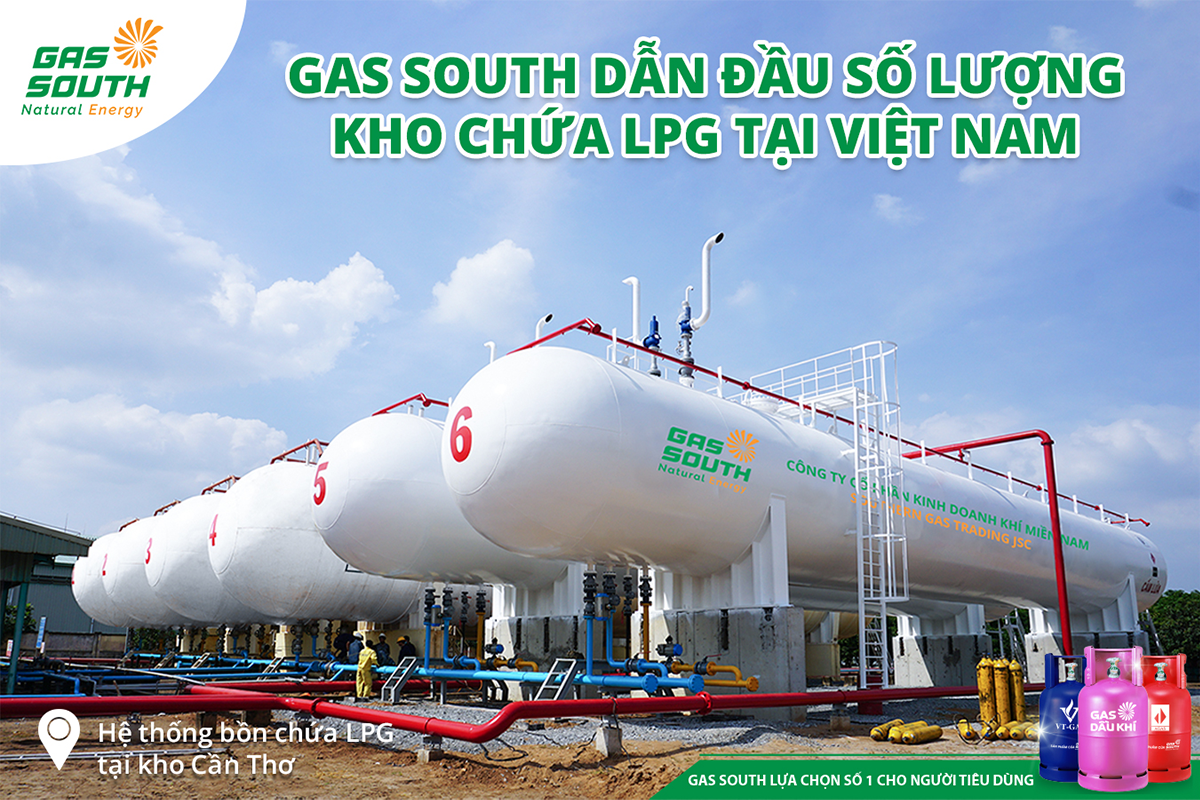The backbone of national economic development is industrial development. However, industrial pollutants are getting worse and have a far bigger impact on human health and life as industrialization progresses. What are industrial emissions, where do they come from, and what are their negative effects? To better comprehend this subject, let's learn about an overview of industrial emissions in this post from Gas South!

Industrial emissions are produced during industrial production
1. What does the term "industrial emissions" mean in general?
Industrial emissions are the gases and particulate matter that are released during manufacturing at factories and manufacturers. service or industrial industry.
The main components of industrial emissions often include toxic gases such as CO2, CO, NOX, H2S, and SOX. They can also contain unpleasant odorous and colored substances depending on the industry and production process. Industrial emissions are generally highly toxic and can cause various diseases when exposed directly for extended periods.
2. What are the sources of industrial emissions?
Most industries generate emissions, and the type and quantity of emissions vary depending on the production process. Here are some industries with significant emission levels:
-
Thermal power plants: According to the Ministry of Industry and Trade's report, thermal power plants are among the largest emitters. In the northern region alone, thermal power plants consume an average of 1.5 million tons of coal annually, resulting in 20,000 tons of SO2, 4 million tons of CO2, 8,000 tons of NOx, and about 5,000 tons of particulate matter.
-
Oil refining industry: This industry is one of the major contributors to industrial gas emissions, primarily releasing gases such as CO2, NOx, and H2S during crude oil refining processes.
Coal mining industry: As a specialized mining industry, the coal extraction and processing processes produce a significant amount of total suspended particulates (TSP), PM10, and emissions such as CO, CO2, and SO2.
-
Steel production industry: Among heavy industries, the steel production sector generates substantial gas emissions. It is estimated that, on average, the production of one ton of steel releases around 10,000 m3 of mixed emissions and over 100 kg of particulate matter into the air.
-
Brick and ceramics industry: The firing process in kilns used for brick and ceramics production releases a high amount of hazardous substances, with CO2 and CO being the most significant contributors that severely impact the surrounding environment.
-
Cement and fertilizer production industry: Chemical-intensive production industries also contribute to significant gas emissions, including sulfur-containing gases that contribute to air pollution, acid rain, and water pollution.
-
...

Thermal power is one of the major emission industries
3. Some of the principal negative impacts of industrial emissions
Industrial emissions harm both the environment and human health when they are discharged into the air. In particular, industrial emissions are the primary source of acid rain, which alters the pH of the soil and water environment and severely damages the local ecology.

Acid rain caused by industrial emissions
Industrial emissions are the primary cause of the greenhouse effect, leading to global warming. Climate change is affecting all living species, with growing complexity, polar ice melting, extreme weather events, and rising sea levels impacting life on our planet.
Humans who are exposed to industrial pollutants over an extended time may develop lung (or other organs) cancer, pneumonia, or respiratory failure. People who are frequently exposed to high amounts of industrial pollutants may develop chronic poisoning, which can lead to neurological problems as well as physical tiredness.
Additionally, fine dust from industrial pollutants can irritate the respiratory system and cause eye disorders in urban and suburban settings. Air pollution can also lead to various chronic illnesses when these toxic substances are transformed and infiltrated into the soil, water, and natural food sources.
4. Some effective solutions for industrial pollutants
Industrial emissions are an inevitable consequence of industrial production processes. While we cannot completely eliminate them, there are numerous measures to mitigate their harmful effects. Here are some commonly applied treatment measures:
-
Replace any out-of-date equipment, technologies, and production lines with new, low-emission ones.
-
Using more ecologically friendly production techniques and new scientific and technological advancements.
-
Install exhaust gas treatment systems that adhere to legal requirements, monitor for hazardous gas leaks and emissions that are harmful to the environment regularly, measure them, and take fast action when they occur.
-
Switch to cleaner, more environmentally friendly fuels like CNG, LPG, LNG, etc. in favor of conventional fuels like gasoline, fuel oil, diesel, and coal.
The technique of substituting combustion fuel is being used by numerous organizations in Vietnam and has shown excellent results among the aforementioned industrial emission control strategies. In addition to having high energy efficiency, green fuels like compressed natural gas (CNG) and liquefied natural gas (LNG) also dramatically lower emissions throughout the manufacturing process.…

Using CNG, LNG helps cut industrial emissions
On average, with the same fuel consumption rate, LNG and CNG burn completely and emit less than 20% CO2, 30% NOx, and up to 70% SOx compared to traditional fossil fuels. During combustion, CNG and LNG do not leave any residues, thereby protecting the engine's durability and reducing frequent maintenance costs. In terms of economics, the cost of using CNG and LNG is much lower compared to other fuels, resulting in significant cost savings for businesses.
Currently, Gas South - Southern Gas Trading Joint Stock Company, the leading producer and distributor of LPG, CNG, and LNG in the Vietnamese market, operates from provinces spanning from Ca Mau to Nghe An. With a long history of development (over 23 years) and modern infrastructure, Gas South is ready to quickly meet the natural gas demands of customers with a stable supply and the best prices on the market. Customers who are interested can contact Gas South directly for detailed quotations and advice.
-
Head office: 4th Floor, PetroVietnam Tower, 1-5 Le Duan Stress, District 1, Ho Chi Minh City
-
Phone: 028.3910 0108 - 028.3910 0324
-
Email: lienhe@pgs.com.vn
-
OA Zalo: https://zalo.me/gassouth18006776
Air pollution caused by industrial emissions is an urgent issue in many countries, including Vietnam. It is hoped that after reading this article, Gas South has helped you understand what industrial emissions are and the hazards they pose to human life. Gas South is currently a leading supplier of CNG, LNG, and LPG products. Contact the hotline at 028 3910 0108 or visit the website https://pgs.com.vn/ for more information.





